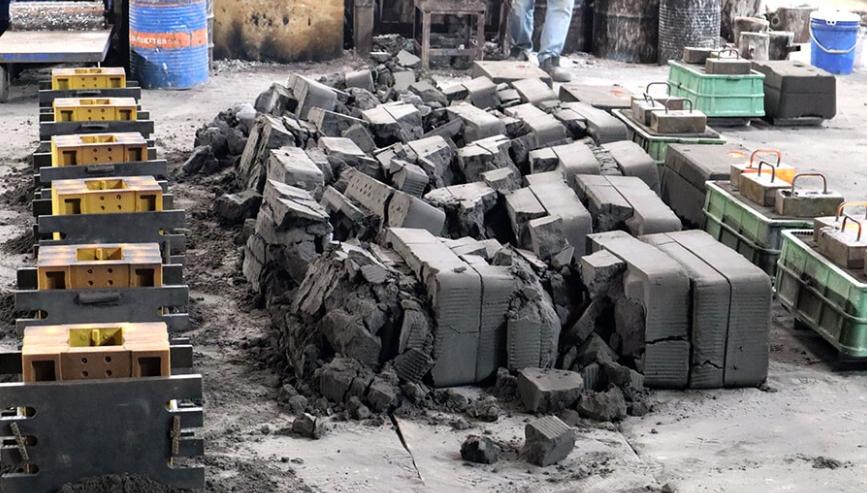Sand casting is one of the most widely used and time-tested metal forming processes, known for its ability to produce complex shapes at a relatively low cost. It plays a crucial role in manufacturing steel components across various industries. In this article, we’ll explore the pros and cons of sand casting, particularly when used with high manganese steel and high chromium cast iron.
Whether you're evaluating sand casting for a new project or comparing it with other manufacturing processes, understanding the pros and cons of each material type can help you make informed decisions.
What Is Sand Casting?
Sand casting is a manufacturing process that uses sand as the mold material. It is especially suitable for creating large, complex, or custom-designed metal parts. Thanks to its versatility and low tooling cost, sand casting is compatible with a wide range of metals, including wear-resistant and heat-resistant steels.

Sand Casting Advantages and Disadvantages
Advantages of Sand Casting
Let’s start with the benefits of sand casting that make it a popular choice across industries:
- Cost-effective for small to medium batch production
Ideal for large, complex, or asymmetrical parts that would be difficult to produce using other methods. - Compatible with a wide range of metals
Especially useful for casting high manganese steel, high chromium cast iron, and other specialty alloys. - Short lead time
Quick setup makes it suitable for prototyping and custom one-off parts.
Disadvantages of Sand Casting
Despite its many benefits, it’s essential to understand the limitations of sand casting as well:
- Lower dimensional accuracy
Compared to investment casting or die casting, sand casting often results in looser tolerances. - Rougher surface finish
Surface quality may require post-processing such as grinding or machining. - Not ideal for high-volume production
For mass production with tight tolerances, other methods like die casting may be more efficient.
How Do Materials Used for Sand Casting Impact Performance?
High Manganese Steel: Features and Applications
Composition and Properties
High manganese steel is a wear-resistant steel alloy that contains over 10% manganese and 0.8% to 1.5% carbon. It is known for its outstanding strength, toughness, and work-hardening properties.
Advantages
- High impact resistance: Maintains toughness even under heavy loading or sudden impact.
- Excellent wear resistance: Especially effective in abrasive environments like mining and construction.
- Work hardening ability: Surface hardness increases with use, extending part life.
Applications
- Excavation machinery: chains, buckets, shovel teeth
- Crushers: hammers, housings, liners
- Cement plants: screen plates, hammer heads
- Railways: rails, turnout components
Disadvantages
- Difficult machining: Due to its hardness, special tooling and slower processing are required.
- Higher production cost: The need for additional processing and durable equipment raises the cost.
Despite the challenges, high manganese steel remains one of the best materials for components subjected to extreme impact and wear, and it is a common material used in our sand casting services.
High Chromium Cast Iron: Strengths and Limitations
Composition and Characteristics
High chromium cast iron typically contains 15% to 28% chromium. It is favored for its hardness, corrosion resistance, and high-temperature stability.
Advantages
- High hardness and abrasion resistance
- Good corrosion and heat resistance
- Suitable for aggressive chemical or abrasive environments
Applications
- Sandblasting machinery: blades, distributors
- Cement industry: grinding balls, screen plates
- Steel mills: linings, impact blocks, coal grinding components
- Pumps and impellers: parts exposed to slurry or corrosive media
Disadvantages
- Prone to cracking during machining: Requires controlled cooling and careful processing.
- Brittle under certain conditions: Less suitable for high-impact loads compared to high manganese steel.
High chromium cast iron is best used when corrosion and high-temperature resistance are top priorities. Our team helps clients choose the optimal alloy for their casting needs through our tailored sand casting service.
Which Material Should You Choose?
The choice between high manganese steel and high chromium cast iron depends on your application:
- Choose high manganese steel if you need high impact resistance and excellent wear properties.
- Choose high chromium cast iron if you need high hardness and resistance to heat and corrosion.
Still not sure? Our technical team can help evaluate your use case and recommend the best material through a free consultation.
Work with a Trusted Sand Casting Company
Qiao Fu Shen has years of experience in producing high-quality cast parts using the sand casting process. From small mechanical components to large machine tool parts, our team ensures every casting meets your required standards.
We offer:
- Multiple mold material options: wood, plastic, metal, or polystyrene
- Broad size capabilities and complex geometries
- Support for both domestic and international clients
Whether you're in need of custom tooling, high-volume production, or prototype development, our sand casting service is ready to help you bring your product to life with precision and reliability.
Have more questions about the advantages and disadvantages of sand casting? Want to discuss your project requirements?
Contact Qiao Fu Shen today and let our casting experts assist you with your next project. We not only offer sand casting service, but also resin shell molding, precision casting, and die casting services. Fill out the form below, and our consultants will get back to you shortly.